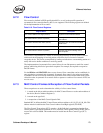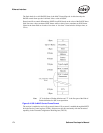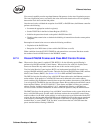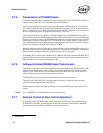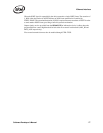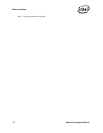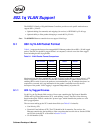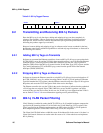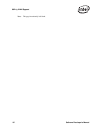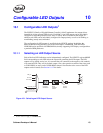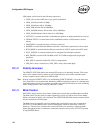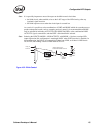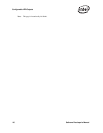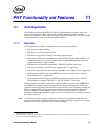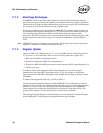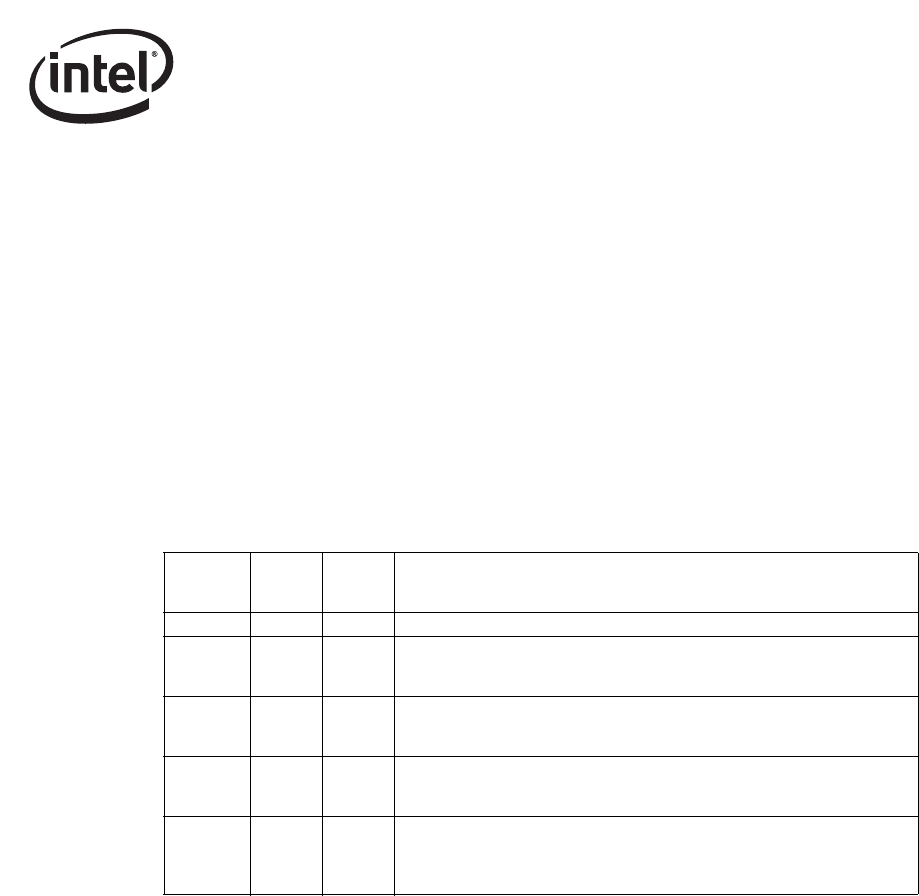
Software Developer’s Manual 181
802.1q VLAN Support
In summary, the 4096 bit vector is composed of 128 32-bit registers. Matching to this bit vector
follows the same algorithm as indicated in Section 13.5.1 for Multicast Address filtering. The
VLAN Identifier (VID) field consists of 12 bits. The upper 7 bits of this field are decoded to
determine the 32-bit register in the VLAN Filter Table Array to address and the lower 5 bits
determine which of the 32 bits in the register to evaluate for matching.
Two other bits in the Receive Control register (see Section 13.4.22), CFIEN and CFI, are also used
in conjunction with 802.1q VLAN filtering operations. CFIEN enables the comparison of the value
of the CFI bit in the 802.1q packet to the Receive Control register CFI bit as an acceptance criteria
for the packet.
Note: The VFE bit does not affect whether the VLAN tag is stripped. It only affects whether the VLAN
packet passes the receive filter.
Table 9-3 lists reception actions according to control bit settings.
Table 9-3. Packet Reception Decision Table
Is
packet
802.1q?
CTRL.
VME
RCTL.
VFE
ACTION
No X X Normal packet reception.
Yes 0 0
Receive a VLAN packet if it passes the standard filters (only). Leave the
packet as received in the data buffer. Clear the VP bit in the receive
descriptor.
Yes 0 1
Receive a VLAN packet if it passes the standard filters and the VLAN
filter table. Leave the packet as received in the data buffer (the VLAN
tag is not stripped). Clear the VP bit in the receive descriptor.
Yes 1 0
Receive a VLAN packet if it passes the standard filters (only). Strip off
the VLAN information (four bytes) from the incoming packet and store in
the descriptor. Set the VP bit in the receive descriptor.
Yes 1 1
Receive a VLAN packet if it passes the standard filters and the VLAN
filter table. Strip off the VLAN information (four bytes) from the incoming
packet and store in the descriptor. Set the VP bit in the receive
descriptor.



